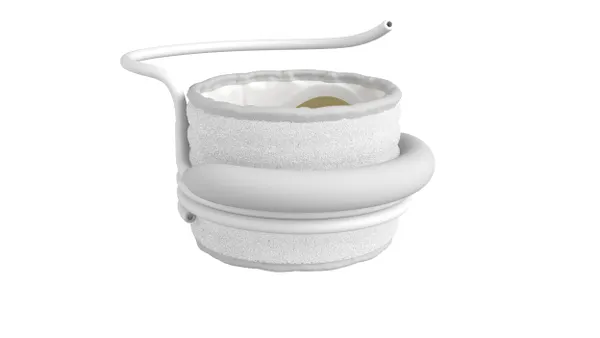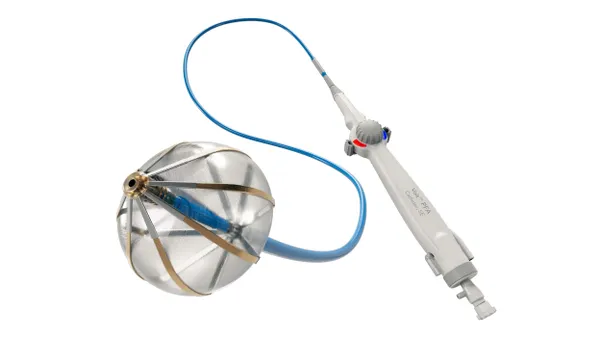Dive Brief:
- The Food and Drug Administration has granted de novo classification to a continuous glucose monitor made by Biolinq for people with Type 2 diabetes.
- Biolinq says its device is the first CGM that does not require a needle to place the sensor beneath the skin, instead using a microsensor array that sits less deep in the skin.
- People with diabetes have a growing number of CGM options as the FDA has authorized new sensors in recent years, including the first over-the-counter sensors and implanted CGMs that can be worn for one year.
Dive Insight:
Biolinq is led by CEO Rich Yang, a former manager at Dexcom and Medtronic. The company was co-founded by Chief Technology Officer Jared Tangney, who has a background in micro-array sensor research and development, and Joshua Windmiller, who left the firm in 2021 to become Dexcom's head of new analytes and sensing platforms, according to his LinkedIn profile.
The startup touts differences in its sensor to make a device that is comfortable and easy to use.
Most CGMs sold today use a small needle to insert a sensor filament just below the skin. The needle is removed once the CGM is applied, and the sensor is worn for several days, measuring glucose levels in the interstitial fluid that surrounds cells below the skin.
Biolinq Shine also measures interstitial fluid, but it uses an array of microneedles that sit shallower in the skin. It is worn as a patch on the forearm.
The sensor also differs from competitors in how it provides information about glucose readings to patients. While most devices on the market today require a separate reader or cell phone app to keep track of blood glucose levels, Biolinq Shine uses a color LED display, indicating blue for readings within a target range and yellow for high glucose.
The device also tracks sleep and activity data, and those metrics can be viewed in an app.
Earlier this year, Biolinq raised $100 million in funding, which the company said it would use to go through the regulatory approval process and for commercial readiness.
Biolinq has plans in the future to measure multiple analytes, such as ketones and lactate, according to its website.
“While we celebrate this tremendous milestone, we’ve only scratched the surface of what is possible with our multi-analyte-capable biosensor platform in supporting metabolic health for everyone,” Yang said in an announcement.
Abbott and Dexcom, which dominate the market for CGMs, have also discussed supporting multiple analytes on future sensors. This summer, Abbott said it plans to launch a device next year that can measure both glucose and ketone levels.
Correction: A previous version of this article misidentified who co-founded Biolinq. That information has been updated.












